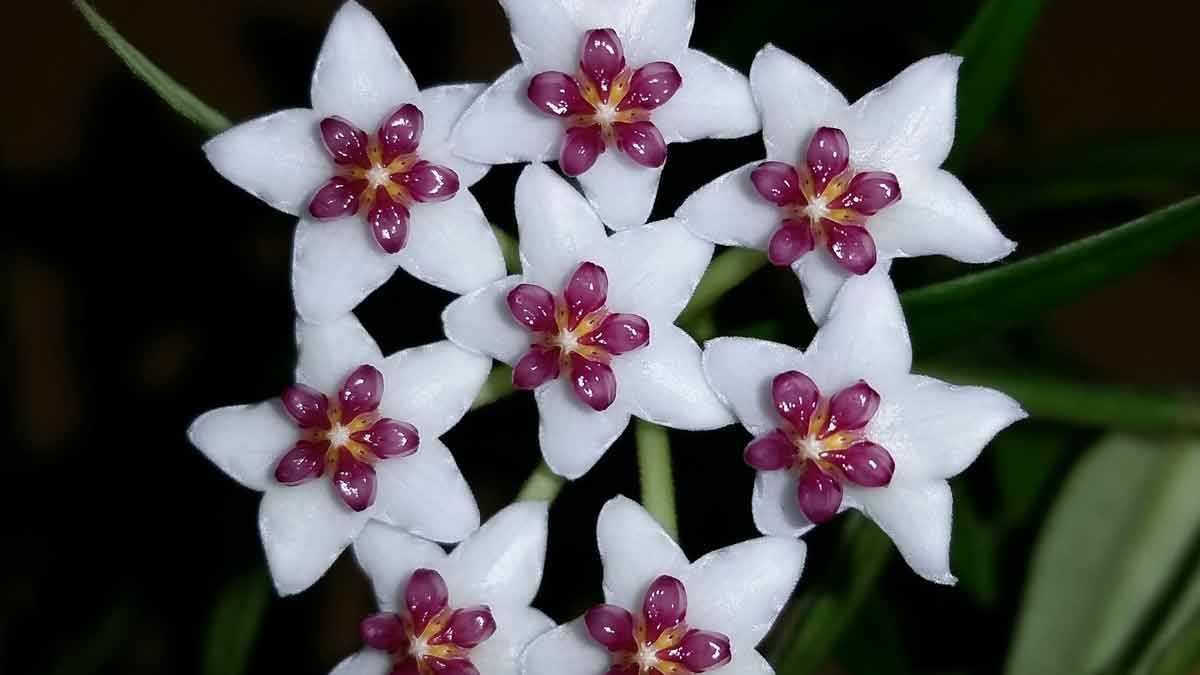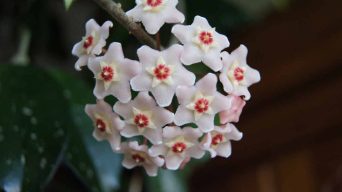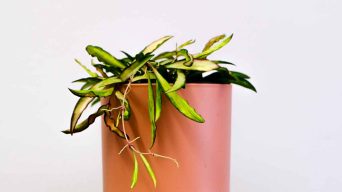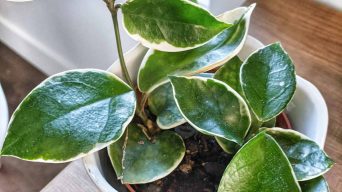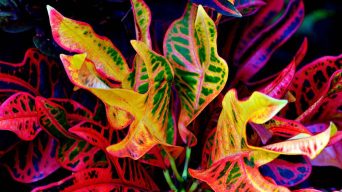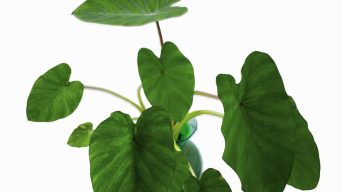Overwatered Hoya symptoms include limp and soft leaves, yellowing or browning tips, and stem/root damage. To save the plant, dry out the roots and cut off any soft/mushy roots. Withhold water until the soil is nearly dry, and check for pests and root rot. Repot if necessary.
Hoya plants are beloved by many for their stunning foliage and beautiful, fragrant flowers.
However, like any houseplant, they can be susceptible to specific issues if not properly cared for – one of the most common being overwatering.
If you’ve noticed your Hoya’s leaves turning yellow or limp stems, don’t panic!
Here we’ll explore the causes and symptoms of an overwatered Hoya plant and provide practical solutions to nurse yours back to health.
Understanding Overwatering In Hoya Plants
To gain insight into the issue of overwatering in Hoya plants, it is crucial to identify the primary factors contributing to this problem.
These include inadequate drainage, incorrect watering methods, and unsuitable soil types.
Understanding these causes can help gardeners maintain healthy Hoya plants and prevent water-related issues.
Causes Of Overwatering
One common cause of overwatering in Hoya plants is a misunderstanding of the plant’s unique watering needs.
Unlike many houseplants that require consistently moist soil, Hoyas thrive when allowed to dry out between waterings.
Another contributing factor to overwatering is poor drainage due to an unsuitable potting mix or lack of drainage holes in the container.
For instance, using solely garden soil instead of a well-draining potting mix can hold too much water around the roots, stressing your beloved Hoya kerrii or Krimson queen.
Symptoms Of Overwatering
Overwatered Hoya plants exhibit several telltale symptoms that alert you to the need for intervention.
One of the most common signs is yellowing leaves, which may appear wilted or soft to the touch.
Excess water fills air pockets in the soil mix, depriving roots of vital oxygen and leading to leaf discoloration.
Another symptom indicative of an overwatered plant is root rot – a dangerous fungal disease that thrives in excessively moist conditions.
Root rot gives off a distinct foul smell and causes roots to become mushy and discolored.
If left untreated, this condition could severely damage or even kill your beloved Wax plant like Hoya carnosa or Hindu rope plant.
Effects On Hoya Plants
Overwatering can have numerous detrimental effects on Hoya plants, ultimately hindering their growth and overall health.
Excess water in the soil prevents proper air circulation around the roots, causing them to suffocate and eventually rot.
In addition to root rot, overwatered Hoya plants often exhibit other visible symptoms, such as yellowing leaves or wilting, even though the soil has sufficient moisture.
Some common pests, like fungus gnats, may thrive in damp conditions brought about by overwatering.
The weakened state of an overwatered plant also makes it more susceptible to infections and diseases caused by various pathogens.
If left unaddressed, these negative impacts could lead your beloved Hoya plant on a downward spiral toward decline or even death.
How To Save An Overwatered Hoya Plant
If you have an overwatered Hoya plant, taking immediate action is crucial.
You can save the plant by stopping watering it immediately and improving its drainage by adding porous materials to the soil mix or repotting it in a container with good drainage holes.
It’s also essential to trim damaged leaves and stems and consider repotting the plant if necessary.
Following these steps, you can revive your overwatered plant and help it thrive again.
Stop Watering The Plant
If you suspect your Hoya plant has been overwatered, the first step to saving it is to stop watering it.
Overwatering can lead to root rot and other related issues that harm the plant’s health.
It’s also essential to ensure the pot drains well to prevent water from remaining stagnant in the soil.
Keep an eye on your Hoya plant after stopping watering for signs of improvement, such as new growth or vibrant leaves.
If there is no change, further steps may be needed, such as repotting or trimming damaged leaves and stems.
Remember always to use a well-draining soil mix when you resume watering your Hoya plant regularly.
Improve Drainage
Poor soil drainage is a root cause of overwatering in Hoya plants.
To improve drainage, consider repotting the plant in a fresh potting mix with added perlite or vermiculite to enhance aeration and drainage.
Ensuring the pot has adequate drainage holes at the bottom is also essential, allowing excess water to drain freely.
Additionally, placing stones or gravel at the bottom of the pot can help avoid waterlogging and promote better soil drainage.
The correct moisture level for Hoya plants requires a delicate balance between underwatering and overwatering.
Trim Damaged Leaves And Stems
If you notice that your hoya plant has been overwatered, it’s important to act quickly to save it from further damage.
One of the essential steps in rescuing an overwatered Hoya plant is to trim damaged leaves and stems.
Overhydration can cause leaves and stems to become mushy or wilted, eventually leading to root rot.
When trimming, use clean, sharp shears or scissors to avoid causing additional damage.
Cut away any yellowing leaves or branches close to the base of the stem where they meet healthy tissue.
You may also need to prune back healthy growth if it becomes too leggy due to excessive watering.
Repot The Plant
Repotting an overwatered Hoya plant is crucial in saving it from further damage.
Before repotting, ensure the soil has adequately drained, and the roots are not too damaged.
Choose a pot slightly larger than the previous one with proper drainage holes to allow excess water to escape easily.
When repotting an overwatered Hoya, gently remove it from its current pot and carefully trim any damaged roots before planting it into the new pot with fresh soil.
The trimmed roots will encourage healthy growth while minimizing the risk of root rot caused by stagnant water in old, compacted soil.
By following these tips on saving an overwatered plant through repotting and careful watering practices moving forward, you can help restore your plants’ health and see them thrive once more!
Monitor For Improvement
It’s crucial to monitor your Hoya plant for improvement after implementing the steps to save an overwatered plant.
The first sign of progress is when there are no more yellowing or drooping leaves.
One way to check your progress is by using a moisture meter to test the soil moisture level.
This tool gives accurate readings and helps determine if the soil has dried enough for watering.
It also prevents underwatering in the future while ensuring you don’t go back to overwatering again.
Preventing Overwatering In The Future
To prevent overwatering, taking proactive measures is crucial.
These measures include developing a watering schedule, selecting the appropriate potting mix, ensuring proper pot drainage, and adhering to best practices for watering.
Following these guidelines can effectively avoid overwatering your plants and keep them healthy and thriving.
Developing A Watering Schedule
A proper watering schedule is crucial to the health of your Hoya plant. Overwatering can lead to root rot while neglecting to water enough can cause leaf drop and other issues.
Consider factors such as humidity levels and pot size when developing a watering schedule.
To avoid overwatering, make sure that the potting mix you’re using is well-draining and has plenty of drainage holes in your pot.
As we mentioned earlier, adding perlite or coarse sand to your soil mix can also help improve drainage.
Choosing The Right Potting Mix
To prevent overwatering in the future, it’s essential to choose the right potting mix for your Hoya plant.
A well-draining soil mix with perlite, vermiculite, or sand is recommended.
These ingredients help improve drainage and prevent water from sitting in the soil for too long.
Avoid using garden soil as it can retain too much moisture and lead to root rot.
When repotting your Hoya plant, carefully remove old soil from its roots.
Consider adding sphagnum moss around the base of the plant to help retain moisture while still allowing excess water to drain away.
Remember that healthy roots are vital for a strong and vibrant Hoya plant.
Be mindful of not overwatering or underwatering them when choosing a potting mix.
Knowing The Difference Between Potting Soil And Garden Soil
One of the most important aspects of preventing overwatering in Hoya plants is using the correct soil type.
Potting soil and garden soil may seem interchangeable.
Still, they have different compositions that can significantly affect a plant’s moisture levels.
Potting soil is specifically designed for potted indoor plants.
It contains ingredients such as peat moss, perlite, vermiculite, and compost, providing good drainage while retaining moisture.
On the other hand, garden soil is heavier and clay-like because it requires stability against natural elements like wind and rain.
Understanding these differences is crucial to maintaining healthy Hoya plants.
Using the wrong type of soil can lead to overwatering or under-watering problems equally detrimental to their growth.
Ensuring Proper Pot Drainage
Proper pot drainage prevents overwatering, which can harm Hoya plants.
To ensure proper drainage, it’s recommended to use a pot with drainage holes at the bottom.
This allows excess water to drain out and prevents moisture from accumulating at the bottom of the pot.
In addition, using a well-draining soil mix that includes ingredients like perlite or vermiculite can also help improve pot drainage.
By ensuring proper pot drainage, plant enthusiasts can prevent overwatering and maintain healthy roots for their Hoya plants.
Following Best Practices For Watering
To prevent overwatering in the future, it’s important to follow best practices for watering your hoya plants.
One of the essential tips is to develop a watering schedule and stick to it.
Depending on humidity levels and pot size, you may need to water your hoya plant once or twice a week.
Another critical factor is ensuring proper drainage by using pots with drainage holes at the bottom or adding rocks to the bottom of pots before adding soil.
Proper watering practices are critical for healthy root growth, which is necessary for optimal plant growth and care.
Overwatering can lead to fungus gnats infestation or even root rot while underwatering leads to dryness and yellow leaves resulting from insufficient hydration causing poor health of the plant overall.
Final Thoughts
Overwatering is a common problem that can harm the health of Hoya plants.
However, an overwatered plant can be saved with proper care and attention.
Understanding the causes and symptoms of overwatering is crucial in finding solutions to save your plant.
Following the steps outlined in this article can bring your overwatered Hoya back to its healthy state.
Remember to follow best watering practices and prevent future overwatering by choosing the right potting mix and ensuring proper drainage.

